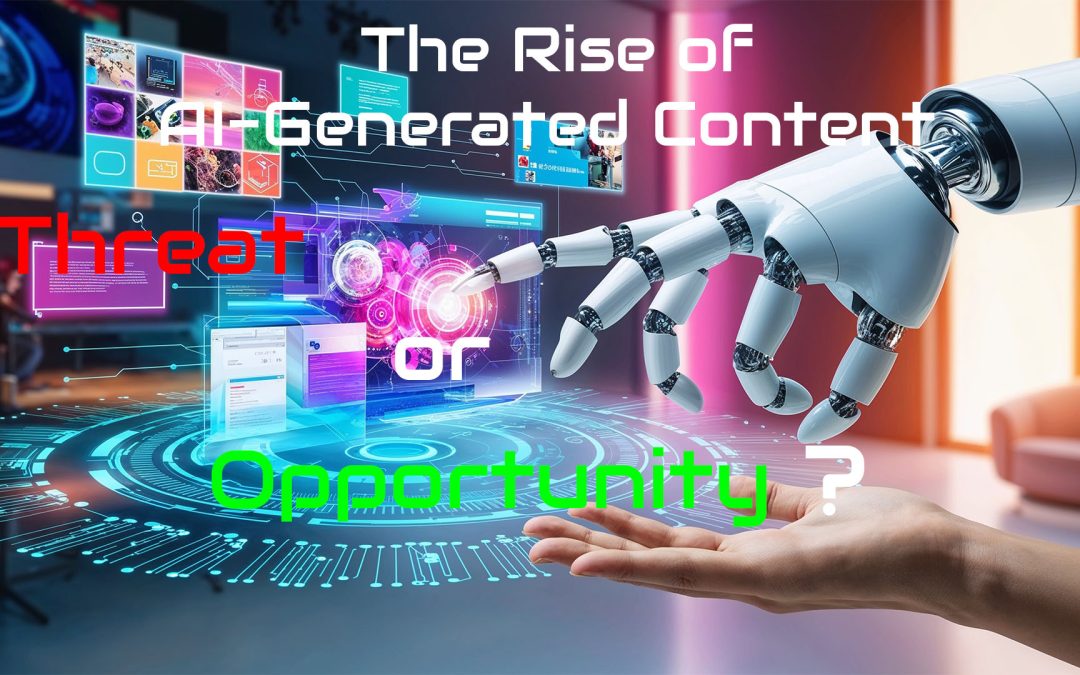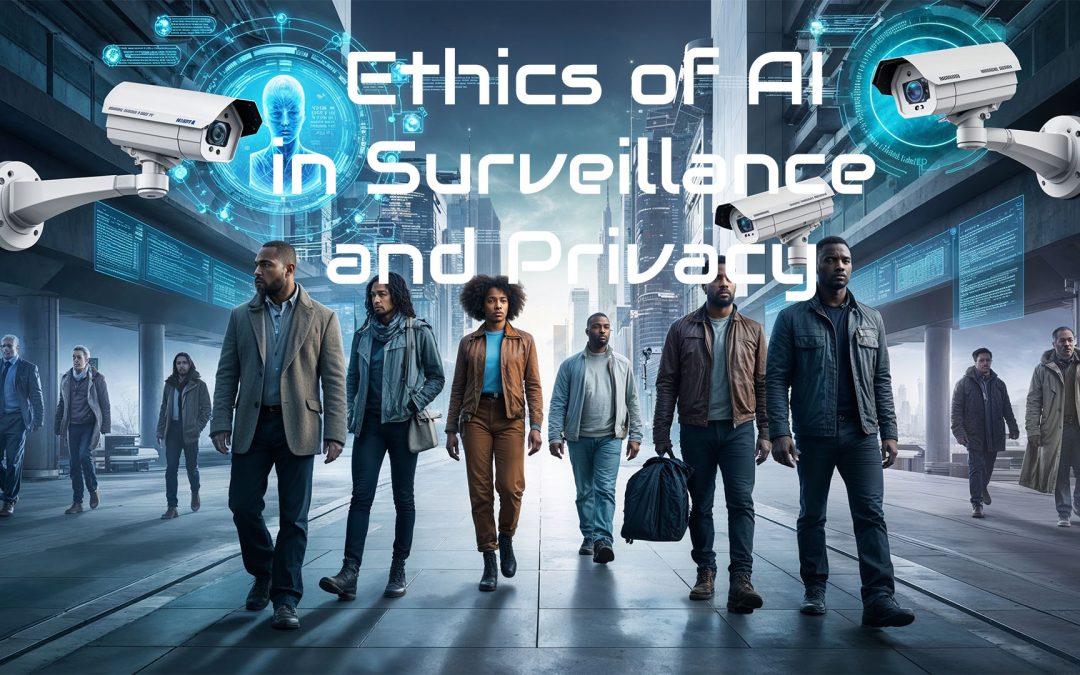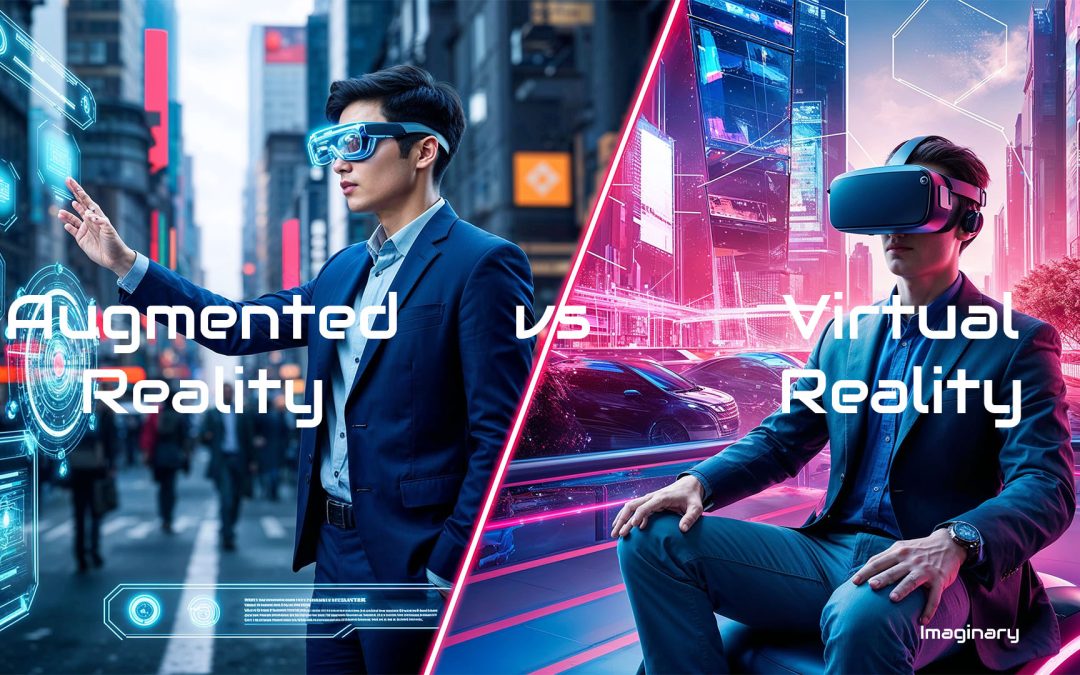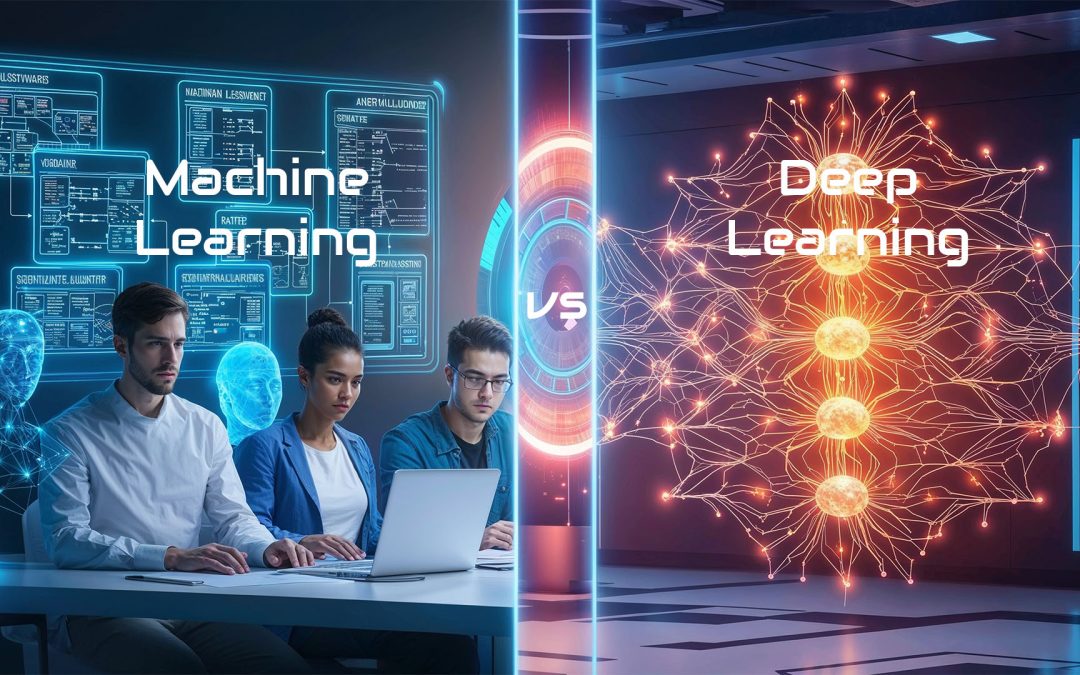
Rise of AI-Generated Content: Threat or Opportunity in the 21st?
Rise of AI-Generated Content
Is it Revolutionary Threat or Game-Changer in the 21stCentury?
The rapid evolution of artificial intelligence (AI) has reshaped numerous industries, and content creation is no exception.
AI-generated content, from written articles to artistic creations, is revolutionizing how we think about creativity and efficiency.
However, this development raises pressing questions: Is AI-generated content a threat to human creativity or an opportunity to innovate?
This article explores the potential, risks, and future of AI-generated content.
What Is AI-Generated Content?
AI-generated content refers to any form of media—text, images, audio, or video—produced by AI algorithms.
These algorithms, such as OpenAI’s GPT or DALL-E, utilize vast datasets to create human-like outputs.
AI content generation is used in marketing, journalism, social media, and entertainment, streamlining workflows and cutting costs.
Opportunities Presented by This Kind of Content
- Enhanced Efficiency
AI can generate content faster than humans, providing an efficient solution for high-volume needs like blogs, ads, and reports. - Cost Savings
Businesses save money on hiring large content teams by utilizing AI for repetitive or simple tasks. - Accessibility and Inclusivity
AI tools like text-to-speech and automatic translation make content accessible to diverse audiences, bridging language and ability barriers. - Creative Support
AI enhances creativity by offering suggestions, drafting ideas, or creating prototypes, allowing humans to focus on refinement and innovation.
Challenges and Threats
- Job Displacement
The automation of content production threatens traditional roles like writers, graphic designers, and journalists. - Quality Concerns
AI outputs sometimes lack depth, originality, and cultural context, leading to subpar or irrelevant content. - Ethical Issues
AI can generate misleading information or deepfake media, raising concerns about authenticity and misinformation. - Intellectual Property
Who owns AI-generated content? This question remains unresolved, creating legal gray areas.
Ethics
The ethics surrounding AI-generated content are complex. Key issues include plagiarism, the potential for bias in AI training datasets, and transparency in disclosing AI involvement.
Striking a balance between ethical considerations and technological advancement is essential.
AI vs. Human Creativity
AI excels in automation and pattern recognition but lacks the emotional depth, intuition, and cultural understanding of human creators.
Many argue that while AI can assist, it cannot replace the human touch in storytelling, art, and personal expression.
Future of AI-Generated Content
The future is likely a hybrid model where AI tools work alongside humans. This collaboration could lead to groundbreaking innovations that blend efficiency with creativity.
Regulation, education, and public awareness will shape how society adapts to this change.
❓ Frequently Asked Questions
What is AI-generated content?
AI-generated content refers to media produced by algorithms, including text, images, audio, and video.
How is this content used in industries?
It is widely used in marketing, journalism, social media, and entertainment to automate tasks and improve efficiency.
What are the benefits of this content?
Benefits include cost savings, efficiency, creative support, and improved accessibility.
What are the risks if AI generates your content?
Risks include job displacement, quality issues, ethical concerns, and intellectual property disputes.
Can AI replace human creativity?
No, AI lacks emotional depth and cultural understanding, making it a tool rather than a replacement for human creativity.
What ethical issues can arise from such content?
Key issues include plagiarism, bias in training data, and the transparency of AI involvement.
Who owns AI-generated content?
Ownership laws are unclear and vary by jurisdiction, creating legal ambiguity.
How can businesses use the content generated in this way responsibly?
Ensuring ethical practices and transparency and complementing human work with AI tools.
Will AI-generated content lead to job loss?
While it threatens some roles, it creates new opportunities in AI development and oversight.
What is the future of AI-generated content?
A hybrid model where AI assists humans, blending efficiency with creativity while addressing ethical challenges.
Conclusion and Summary – AI Generated Content
The rise of artificial intelligence-generated content is both a challenge and an opportunity.
While it can potentially revolutionize industries by improving efficiency and accessibility, it poses ethical and economic dangers.
Finding a balance between harnessing AI and preserving human creativity is key to ensuring a positive impact.
If we embrace this revolution responsibly, we can unlock the full potential of AI while mitigating its risks.
AI-generated content transforms industries, offers efficiency and innovation, and raises ethical and creative challenges. Balancing AI and human ingenuity will define its future.
Related Posts
🔗 Related Posts
- Discover the Evolution of Artificial Intelligence from the 19th Century
- ChatGPT vs Bing AI: Full Comparison of Features, Speed & Logic
- Ethics of AI in Surveillance and Privacy: 7 Key Concerns Explored
- Leonardo Integrates Veo 3: The AI Video Revolution Just Got Real
- Discover 15 Video Editors: A Comprehensive Comparison in 2024
This article is part of the AI Tools Comparison Series (Revolutionizing AI: Top Tools and Trends, it can be found here: Definitive Guide to Brilliant Emerging Technologies in the 21st Century).
Thanks for reading.
Resources
Here’s a curated list of valuable resources to explore AI-generated content more. These include educational articles, tools, and affiliate options for further monetization:
- OpenAI – Explore AI Tools Like ChatGPT
Learn about OpenAI’s revolutionary models, including ChatGPT and DALL-E, and how they power AI-generated content. - Canva Pro – AI-Powered Design Tool
Create stunning designs with AI tools integrated into Canva. Get access to Pro features that boost your content creation workflow. - Jasper AI – Your AI-Writing Assistant
Jasper is a leading AI-powered writing assistant that is perfect for quickly and efficiently generating high-quality content. - Coursera | Online Courses & Credential from Top Educators, Join for Free
Take an in-depth course on AI and machine learning to understand the backbone of AI-generated content and its applications.
ℹ️ Note: Due to the ongoing development of applications and websites, the actual appearance of the websites shown may differ from the images displayed here.
The cover image was created using Leonardo AI.





